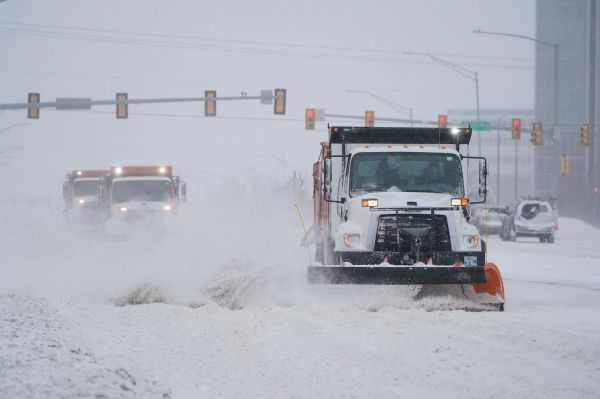For several days, parts of Texas in the southern United States have been hit by blizzards, causing road surfaces to freeze, roads to be closed and widespread power outages, affecting more than 10 million people.” What are the deep causes of the Texas crisis? The weakness of infrastructure in the United States has once again attracted media attention.
Power and water are cut off. Is the winter storm so powerful?
According to the National Blackout Information Network, as of 3:30 p.m. ET on the 19th, more than 170,000 users in Texas still had power outages, and residents in some areas have been out of power for several days.
Without electricity, the house was frozen like an ice cellar, and the water pipe could not last long. Many residents’ homes have bursting water pipes and water flowing into ice sculptures.
However, Texas is an important energy town in the United States. Is this storm really so powerful?
Texas is located in the southern United States. It has warm winters, hot summers, rarely snow, and rarely encounters “winter storms”. Therefore, the power supply system is not equipped with antifreeze devices to withstand extreme winter weather.
The arrival of this cold current has led to a surge in local electricity demand, and the supply exceeds the demand.
More than 50% of the standby power generation is paralyzed by low temperature freezing, and the collapse of the natural gas thermal power generation system has caused a large gap in power supply.
However, some analysts say that although the direct cause is extreme weather, the old power facilities in the United States and the insufficient operation mechanism of the overall power system cannot be ignored. It is reported that 70% of transmission lines and transformers in the United States have a service life of more than 25 years, and 60% of circuit breakers have a service life of more than 30 years.
Old power grid facilities face huge challenges to ensure the reliability of power supply.
As early as 2011, Texas experienced a similar winter storm, which caused widespread power outages.
Kyrie King, a research scientist at the University of Texas at Austin, pointed out that the latest “Texas crisis” showed that the Texas government had simply failed to learn from the lessons of a decade ago and inject more investment into the grid, which had “clear shortcomings” in design and response.
The infrastructure of the United States is backward, and Texas is not alone.
On February 20, The Economist published an article entitled “The Texas Storm Exposes the Backlash of American Infrastructure”.
The article points out that not only one part of the state has infrastructure loopholes, but also the infrastructure construction in many areas across the United States is quite inadequate.
In California, the heat and rampant wildfires also made local residents feel the “darkest moment”.
The Hill also reported that the infrastructure construction in the United States has been in place for half a century.
So, what are the infrastructure loopholes in the United States? Let’s take a look at these examples.
Express train
In the eastern United States, there is an operating Acela Express train with a design speed of 240 kilometers per hour.
However, due to the severe aging facilities of the Northeast Corridor Railway Line, Asile Express can only drive at full speed on part of the road.
The average speed of ordinary driving is about 115km/h, only about half of the maximum speed.
The New York Metro is the urban rail transit system in New York City, USA. It is the largest underground railway system with the largest number of stations. It has been more than 100 years since it was opened in 1904.
But now, compared with “old”, “old” and “dirty” are more often accompanied by the New York subway.
“Don’t do infrastructure construction, just throw bombs” produces bad results.
The disaster situation in California under this winter storm once again pushed the topic of backward infrastructure in the United States to the forefront of the storm.
According to a report released by the American Society of Civil Engineers in January, according to the national economy in 2019, regardless of the COVID-19 epidemic, the infrastructure of the United States will be established by 2039.
The investment gap will reach $5.6 trillion. If these funding gaps are not filled in time, it is expected to lose more than $10.3 trillion in GDP by 2039.
Russia Today commented on its website on the 19th, saying that the crisis in Texas in the United States is the result of “the U.S. government spends money on infrastructure, but on bombs”.
The article pointed out that the problem of “backward infrastructure and inability to cope with extreme weather” in the United States has existed for a long time, but the U.S. government is unwilling to increase its financial investment in infrastructure, health care and other areas closely related to people’s livelihood.
Instead, it has increased military spending year after year and is keen to act as a “world policeman”. The American people are not protected in the disaster, and American politicians do not care about it and bear any consequences.



